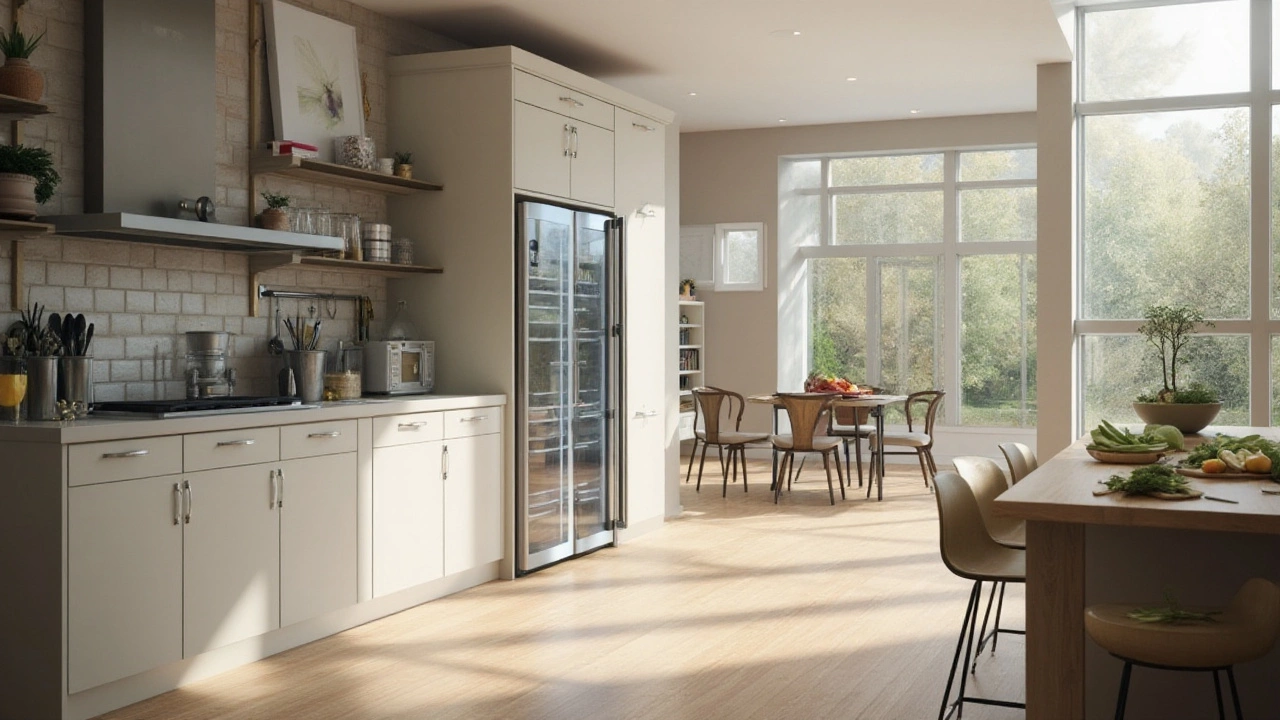Careful consideration of refrigerator placement is crucial in kitchen design for optimizing functionality and the overall flow of the space. Poorly placed refrigerators can hinder movement, block light, or interfere with cooking processes. Strategic placement not only improves the aesthetic appeal but also enhances ease of use. This article explores areas to avoid when installing your refrigerator to create a harmonious kitchen environment.
Refrigerator Placement: Practical Tips for Every Kitchen
Choosing where to put your fridge might feel like a small detail, but it can change how your kitchen works day‑to‑day. A good spot saves you steps, keeps food fresh longer, and stops the unit from working harder than it should. Below are simple rules you can follow right now, no matter if you have a tiny apartment kitchen or a big open‑plan space.
Where to Put Your Fridge
First, think about traffic flow. The fridge should sit near the main cooking area so you can grab ingredients while you’re prepping, but it shouldn’t block the path between the sink, stove and prep surfaces. A classic "work triangle" – fridge, sink, stove – works well when each point is about 4‑9 feet apart. If the fridge sits too far from the sink, you’ll end up carrying heavy groceries across the room.
Next, mind the walls and cabinets. Most manufacturers recommend at least 2 inches of space behind the fridge for airflow and 1‑2 inches on each side. This gap lets the compressor breathe and prevents overheating, which can raise your energy bill. If you’re installing a built‑in model, check the specs – some need a little extra clearance for ventilation panels.
Sunlight is another hidden factor. A fridge placed next to a large window can get hotter in summer, forcing it to run longer. If you can’t avoid a sunny spot, consider a low‑e film on the glass or a blind to keep the heat down.
Keeping Your Fridge Efficient
Once the spot is set, think about levelness. An uneven fridge will make the doors swing open, letting cold air escape. Use a bubble level and adjust the front legs until the unit sits flat. Most fridges have leveling screws at the front – a quick turn can fix the problem.
Door swing direction matters for traffic too. If the kitchen layout forces you to run into the door, switch the hinges. Most models allow you to change from left‑hand to right‑hand swing with a few bolts. This small change can prevent accidental bumps and keep the seal tight.
Finally, give the fridge a little breathing room at the top. Storing items on top of the unit can block vents and make the motor work harder. If you need extra storage, place a narrow shelf a few inches above the fridge, but keep the top clear of heavy boxes.
By following these easy steps – respecting the work triangle, allowing proper airflow, avoiding direct sun, leveling the unit, and checking door swing – you’ll get a fridge that fits naturally into your kitchen and runs efficiently. A well‑placed fridge doesn’t just look good; it saves you time, energy, and money. Try these tips on your next kitchen remodel or when you’re just moving the fridge to a new spot, and you’ll notice the difference right away.
